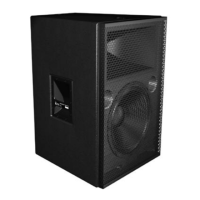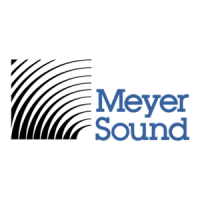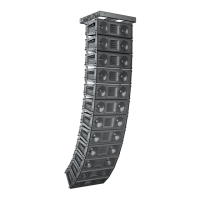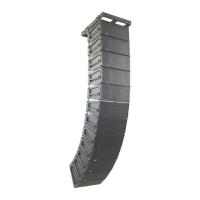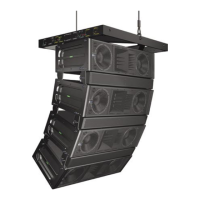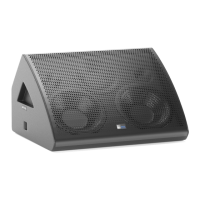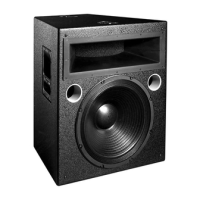7
Fans and Cooling System
The CQ uses a forced-air cooling system with two fans
to prevent the amplifiers from overheating. A variable-
speed primary fan runs continuously with an inaudible
operating noise of 22 dBA at 1 m at its slowest speed.
The speed of the primary fan begins increasing when
the temperature of the heatsinks reaches 42°C. The
fan reaches full speed at 62°C and is barely audible near
the cabinet, even without an audio signal.
In the unusual event that the temperature reaches
74°C, the secondary fan turns on and is clearly audible.
The secondary fan turns on in response to
• primary fan failure (check its status immediately);
• high source levels for a prolonged period in hot
temperatures or direct sunlight;
• driver failure.
The secondary fan turns off when the temperature
decreases to 68°C.
In the highly unlikely event that the secondary fan
does not keep the temperature below 85°C, the CQ
automatically shuts down until AC power is removed
and reapplied. If the CQ shuts down again after cooling
and reapplying AC power, contact Meyer Sound for
repair information.
The fans draw air in through ducts on the front of the
cabinet, over the heatsinks, and out the rear of the
cabinet. Since dust does not accumulate in the amplifier
circuitry, its life span is increased significantly. Make
sure that the air ducts are clear and that there is at
least 6 inches clearance for exhaust behind the cabinet.
air
cooling
fans
heatsinks
power
supply
A foam insert filter, in combination with the entire
front grill surface, acts as an air filter for the cooling
system. Despite the filtering, extensive use or a dusty
operating environment can allow dust to accumulate
along the path of the airflow, preventing normal cooling.
We recommend periodically removing the grill, filter,
and amplifier module and using compressed air to
clear dust from the grill, filter, fans, and heatsinks.
Rigging
The maximum recommended load for a CQ with air-
craft pan fittings is 500 lb (228kg). This working load
is one-fifth the cabinet’s breaking strength. The CQ
has two rigging brackets on both the top and bottom
of the cabinet; each bracket is capable of supporting
the full working load of the cabinet.
rigging brackets
(two on top, two on bottom)
Handles are for carrying only.
Do not use them for rigging!
!
There are four types of interchangeable rigging brackets,
each fastened by six Phillips screws:
• aircraft pan fittings (ring and stud)
•
3
/8”-16 nut plates
• M-10 x 1.5 metric nut plates
• blank plates (if no rigging brackets are requested)
NOTE: Units with nut plates are rated for the weight of
one cabinet only.
Rigging load ratings assume a straight tensile pull and
that the cabinet is in new condition with aircraft pan
fittings. If these conditions are not met, the load ratings
can be reduced significantly. Load ratings can also be
reduced by age, wear, and damage. It is important to
inspect the rigging hardware regularly and replace
worn or damaged components immediately.
The standard model should not be installed outdoors
without weather protection. The cabinet, exposed
electronic circuitry, and drivers can all receive weather
protection treatment that allows the unit to be used
safely in wet conditions. Contact Meyer Sound for
information about weather-protected units.
NOTE: All Meyer Sound products must be used in
accordance with local, state, federal, and industry
regulations. It is the owner’s and/or user’s responsibility
to evaluate the reliability of any rigging method for
their application. Rigging should be done only by
experienced professionals.
